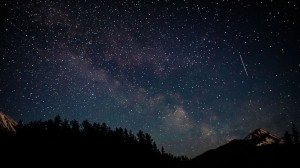 If you’ve ever had the opportunity to gaze at the stars in a truly dark sky, you know what an awe-inspiring experience it is. But the sad truth is, most Americans have never enjoyed such an occasion. Not because they haven’t looked up at night, but because what passes as a “dark sky” in modern society is, in reality, far from actually dark.
If you’ve ever had the opportunity to gaze at the stars in a truly dark sky, you know what an awe-inspiring experience it is. But the sad truth is, most Americans have never enjoyed such an occasion. Not because they haven’t looked up at night, but because what passes as a “dark sky” in modern society is, in reality, far from actually dark.
Growing population centers and the accompanying artificial lighting is, of course, the primary reason for this lack of inky delight.
Vegas is arguably the most light-polluted locale on the planet. Jupiter, the Moon and the brightest stars of Orion could only be seen if you knew exactly where to look for them. In contrast, we’ve heard many service members remark about how splendid the sky looks from such deployed locations as Afghanistan.
— David Dickinson, Universe Today
(For a fascinating NASA photo showing man-made lighting on the earth at night, click here.)
But it isn’t necessary to go to the extremes of Las Vegas to see the impact. Even areas normally considered remote are feeling the effects of an overabundance of indiscriminate incandescence.
The National Park Service is taking serious note of the problem of light encroachment and its effects on wildlife and tourists alike and through its Night Skies Program is undertaking the protection of nighttime resources in our national parks. Chad Moore, manager of the program, recently told the Smokey Mountain News that the Smokies are particularly vulnerable, given their proximity to population centers.
Population doesn’t have to be synonymous with light pollution, however…cities and counties do have that power in the form of night lighting ordinances — reining in light from signs, parking lots and even their own street lights — and can significantly reduce the light footprint of a community.
And, in fact, with estimates that up to 50% of exterior night lighting is energy wasted as it simply escapes into the increasingly illuminated night sky, many municipalities are putting forth Dark Sky Ordinances to conserve energy and combat light pollution at the same time.
What do these types of ordinances mean for future lighting? Are we relegated to stumble around in dark, unsafe conditions? Decidedly not!
Technological advances in energy-efficient lighting such as high-quality LED lights and Dark Sky Compliant fixtures offer a full array of choices that not only embrace the spirit of night sky preservation and save up to 90% in lighting energy costs, but provide many other advantages as well.
Available for all applications, including parking lot lighting, commercial lighting, residential lighting and other exterior lighting, LED lights are 100% recyclable, consistently provide pleasing lighting color for over 50,000 hours, are instantly on, dimmable and much more.
If you’re ready to save energy costs, protect people and wildlife, and help restore our beautiful night skies, contact us and let us help you proactively embrace this eco-friendly lighting. Don’t wait–the future is now.
